With a knack for grafting and an ear for stories, Lee Calhoun wrote the book on the South’s old apples
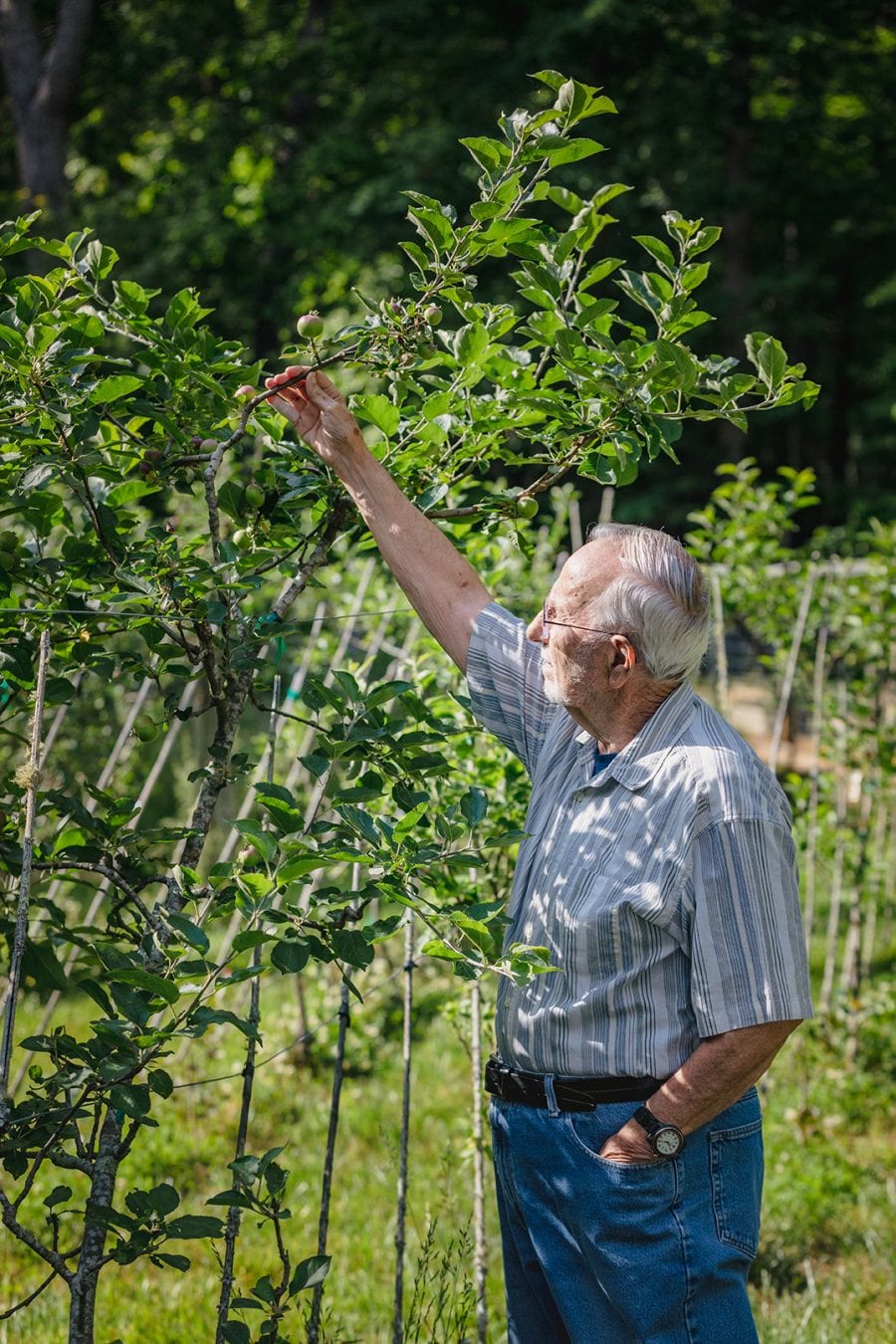
It began innocently enough.
Creighton Lee Calhoun was a man looking to plant a few apple trees for himself and his wife, Edith, as they settled into life on their homestead in Pittsboro, North Carolina. That casual inclination, conceived more than four decades ago, has since shaped Calhoun’s life, the catalog of Southern heirloom apples, and the lives of other apple enthusiasts in ways profound and unexpected.
Earlier this year, Calhoun sat in the comfort of his Chatham County residence, a rustic Japanese-style home he built with his own hands, wearing blue jeans and a t-shirt the color of a Red Delicious apple. At 84 years old, he bears the features of one’s benevolent grandfather: silver-white hair politely combed to the side and a disarming smile framed by a silvery beard. Leaning back in his chair, he reflects on a life well-lived, paved with old Southern apples.
“Being an agronomist, I wanted to have a garden and thought, ‘well, it would be nice to have some fruit trees,’” says Calhoun, who had originally purchased Red Delicious and Golden Delicious apple varieties to plant. Calhoun shared his picks with an elderly man from the area who gave him the name of eight or nine other apples to try, varieties the man claimed you didn’t see anymore. A bit of a history buff, Calhoun decided he’d look for those “old-timey” apples instead. Problem was, he couldn’t find them.
A retired army lieutenant colonel and former Adventure Scout (like the boy scouts, only more outdoorsy), Calhoun isn’t one to turn back at first obstacle He knew if he could locate an old tree, he could cut a twig off and graft it, a skill he gleaned from the pages of Sunset Magazine. He wrote to a company that sold apple trees and purchased rootstocks to graft twigs from old apple trees onto once he found them.
This was the early ’80s, and Calhoun took to the roads analog-style. “I just got in the car and started driving around Chatham County,” he says. Whenever he found a tree, he’d knock on a door, explain that he was looking for old apples, and ask permission to cut a twig. “If they put a name to it, I grafted it.”
On first pass, he grafted fifteen rootstocks with “named apples” and had fourteen successes. After that, he says, he caught the bug. Within a couple of years, he had more trees than he had room for. Out came the chain- saws to clear another acre. By 1984, someone from the Raleigh News & Observer caught wind of what Calhoun was doing and published an article. The response was overwhelming. People began contacting him, asking him to graft them old trees. The demand for old apple trees grew to such a level that, by 1986, the Calhouns decided to open a nursery on their property. The first catalog for Calhoun Nursery, typed by Edith, had sixty apple trees. Within five years, they had amassed 300 varieties.
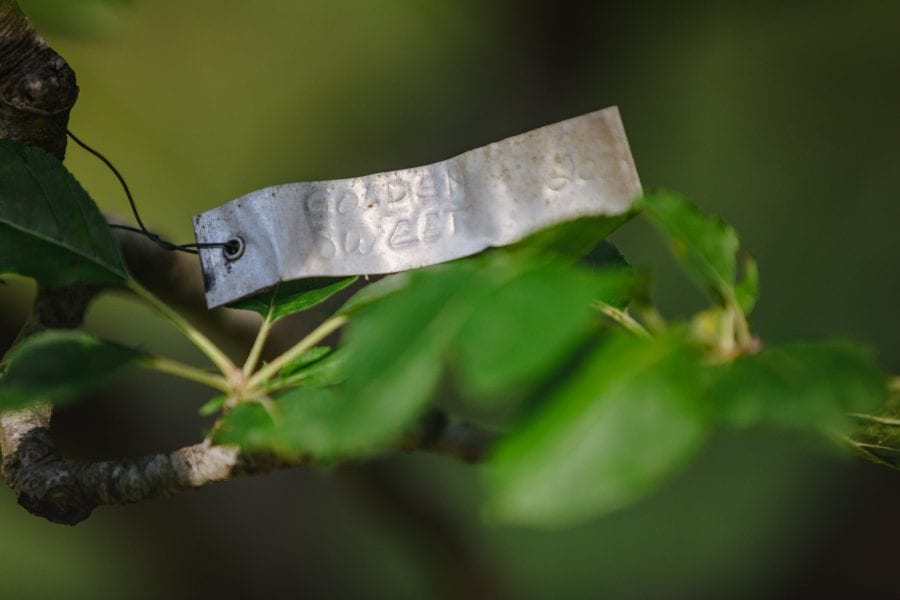
Visitors flocked to Calhoun Nursery and shared stories of their family apples. Or, they’d write letters to Calhoun (his chosen form of correspondence to this day) and he’d respond, then dutifully tuck them away for safe keeping. “I’ve always loved history, and this was history! These people were talking about their parents and grandparents planting these trees, and what they used the apples for, and their own connection with them, and how they struggled to keep the tree alive when it started declining. It was a pretty fascinating thing,” Calhoun says.
Still, he recalls, there was context missing. “I didn’t know where they originated, why they originated, what they were used for,” he says. “So, Edith and I decided to do some research to fill in this gap.” But they found little information. The Calhouns decided to dig a little deeper at nearby university libraries, where they searched old books and nursery catalogs but found few answers. When they’d find something, they’d copy it and shove it into a binder. (Whenever Calhoun shares his story, he often says things like, “I was just stumbling around,” or “I was just wingin’ it.”)
In the late 1980s, he received a letter from a friend who recommended he visit the National Agricultural Library in Beltsville, Maryland. He did. For the next six years, he and Edith would drive to Beltsville, book a motel, and spend four or five days on the twelfth floor of the library, plumbing special collections and its hordes of eighteenth and nineteenth- century seed catalogs.
At the same time, Calhoun wondered how he could reach more people, specifically rural Southerners, to acquire more old apples. He deduced that the rural electricity cooperatives were a central place for folks who were unreachable by modern standards. These cooperatives published a monthly magazine that folks would pick up when they came to pay the power bill. He published his first piece in North Carolina Electric Cooperative’s monthly publication.
He wrote about old apples and broadcasted that he was looking for scion wood to graft trees. It turned out to be a winning method he repeated in Georgia’s cooperatives. “It came to the point where Edith and I would go on these long trips lasting three or four days to collect scion wood from these people with old trees. We’d stay on the road several nights, go over into Tennessee, up to Virginia, and down to South Carolina. I wasn’t conscious of being a trail blazer or anything,” he says. “Really, I wasn’t conscious of the fact that what I was doing was interesting to other people,” he says, followed by a boisterous laugh.
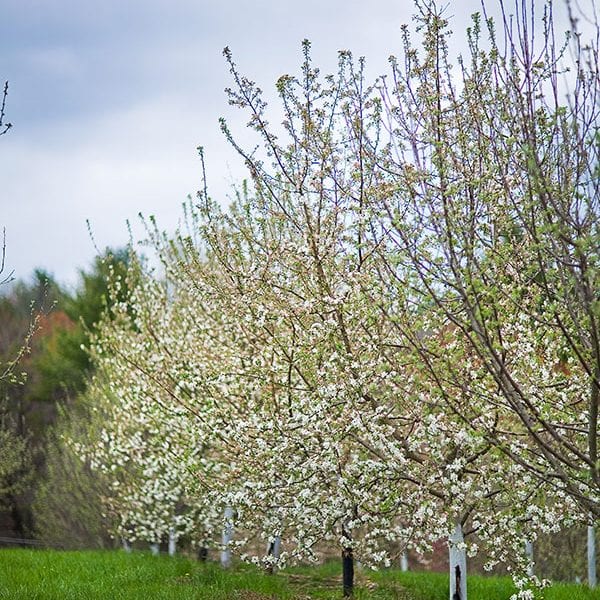
From these person-to-person visits and years of written correspondence, Calhoun started a relationship with fellow Southerners that would become the hallmark of his work, a collection of ephemera rich with story and humanity, and a book that finally documented his findings (spurred by a firm nudge from Edith, of course). Based on a decade of collecting and grafting rootstock, six years of library research, and two full years of poring over piles of notes, binders full of letters, and photo copies from historical books, Old Southern Apples was published in 1995. It is a book as much about people as it is the apples.
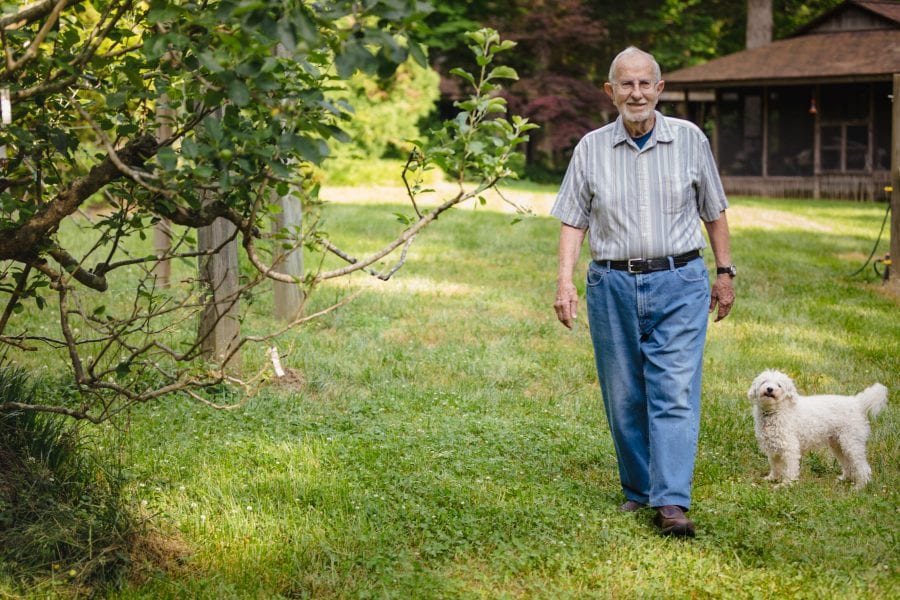
Elizabeth Engelhardt, the John Shelton Reed Distinguished Professor of Southern Studies at the University of North Carolina at Chapel Hill, uses food in her classroom as a way to talk about culture. She sees apples as a portal to community, place, and family. “The way apple biology works, you have to know the tree for the apple to continue to have its identity. To me, that’s Southern studies. Lee got that,” she says.
In her classroom, Engelhardt’s students had the first crack at Calhoun’s comprehensive body of work, recently accessioned into the community archives of the Southern Historical Collection housed inside UNC’s Wilson Library. It was one of Calhoun’s mentees, cider apple grower and pioneering cidermaker Diane Flynt of Foggy Ridge Cider, who brought his work to the attention of the university. Flynt discovered Old Southern Apples when she was conceiving of a distinctly Appalachian cider in the mid-1990s. She eventually made the pilgrimage to Calhoun Nursery and began a friendship and mentorship that’s guided her own apple education. Via telephone and letter correspondence, Calhoun answered Flynt’s apple questions and ultimately inspired her decision to plant certain Southern heirloom cider apples in her orchard; the first commercial planting of such varieties in the modern South.
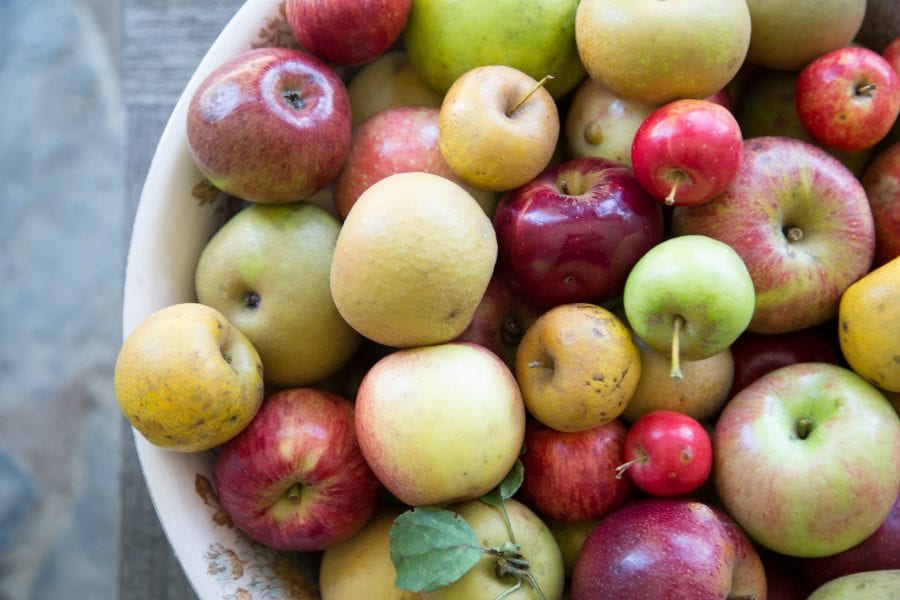
Several years before Calhoun Nursery closed in 2002, Calhoun was contacted by the Horne Creek Living Historical Farm in Pinnacle, North Carolina, with an opportunity to help create an heirloom apple orchard. He agreed, and the Southern Heritage Apple Orchard at Horne Creek now maintains his nursery collection—400 heirloom apple varieties grafted twice, on dwarf stock and regular tree stock, for a total of 800 trees—and serves as an educational destination and living history of the apple’s significance to rural Southern life in the early twentieth century.
Calhoun’s legacy lives elsewhere too. In Reidsville, North Carolina, David Vernon of Century Farm Orchards maintains one of the largest collections of old Southern apples in the region. Years ago, Vernon, a physics instructor, had enlisted Calhoun’s help when he discovered apples on his great-grandparents farm that needed saving. He taught Vernon how to graft, and later entrusted his nursery collection to him. By sharing his collection with Vernon, Calhoun saw to it that his work would live on long after his own nursery closed. Vernon used what he learned from the master to save his family’s apples and transform the generations-old farm into a nursery that specializes in old Southern apples and pears, a move that ultimately saved the farm from financial ruin.
Many view Century Farms as the extended life of Lee’s original preservation efforts, including cider makers Ann-Marie and David Thornton of James Creek Ciderhouse in Cameron, North Carolina. The Thorntons discovered Old Southern Apples in 2008, long after Calhoun Nursery had closed, but followed the Calhoun lineage to Century Farm Orchards for seedlings. The James Creek orchard boasts forty varieties of old Southern apples today, a number Ann-Marie Thornton attributes to the abundant wisdom contained in Calhoun’s book.
“He’s such a hero to us,” she says. “Lee educated people about apples growing in the South.” In addition to growing apples for cider production, Ann-Marie Thornton sells her apples to market-goers at Carrboro Farmers Market, where she has been a vendor for the last six years. She shares the stories of apples like Grimes Golden and Kinnaird’s Choice with her customers, who in turn share their own food memories. With each exchange, the story of a nearly forgotten apple lives on.
It was a spring afternoon in April when I made my way to UNC’s campus to spend a few hours with the Creighton Lee Calhoun collection. Inside the holy quiet of Wilson Library came a rolling cart loaded with boxes, the magnitude of which I wasn’t fully pre- pared for—a life’s work packed into cardboard file boxes and binders with near busted seams. I was awestruck. Here were people brought to life on sheets of church stationery and yellow legal paper, history written out in chicken scratch. In letter after letter, folks invited a guy, who “just wanted to plant a few fruit trees” into their lives with illustrative tales and hand drawn maps, eager to share their wisdom.
Later that evening, a group gathered to honor and celebrate Calhoun, a man whose dogged curiosity had touched their lives. Among them Flynt, Vernon, Thornton, and others who shared a passion for old-timey apples. Engelhardt’s students presented their semester- long projects, work that divided Calhoun’s collection into deep surveys of apple varieties, the people involved, and the food stories found in the years of correspondence; they offered new information mapped and ready to be passed to the next line of curious minds—history preserved and illuminated.
In the acknowledgements to his book, Calhoun writes: “If the story of old southern apples has heroes, it is the men and women who have made the effort to save old varieties.” He continues, “Too many Southerners have taken the easy road, cutting down or jerking out of the ground old apple trees, without knowing or caring that these trees represent an irreplaceable heritage. Here and there, however, someone refuses to be a destroyer and saves a rare old southern apple variety. Let their names… be revered.”
Calhoun is often called the “the savior of Southern apples,” though he waves off that moniker. But to examine his life’s work, the work that has earned him the respect and friendship of many a Southerner, is to see the essence of rural culture. In saving old apples, Calhoun has cemented the once fraying thread between apples and their people.
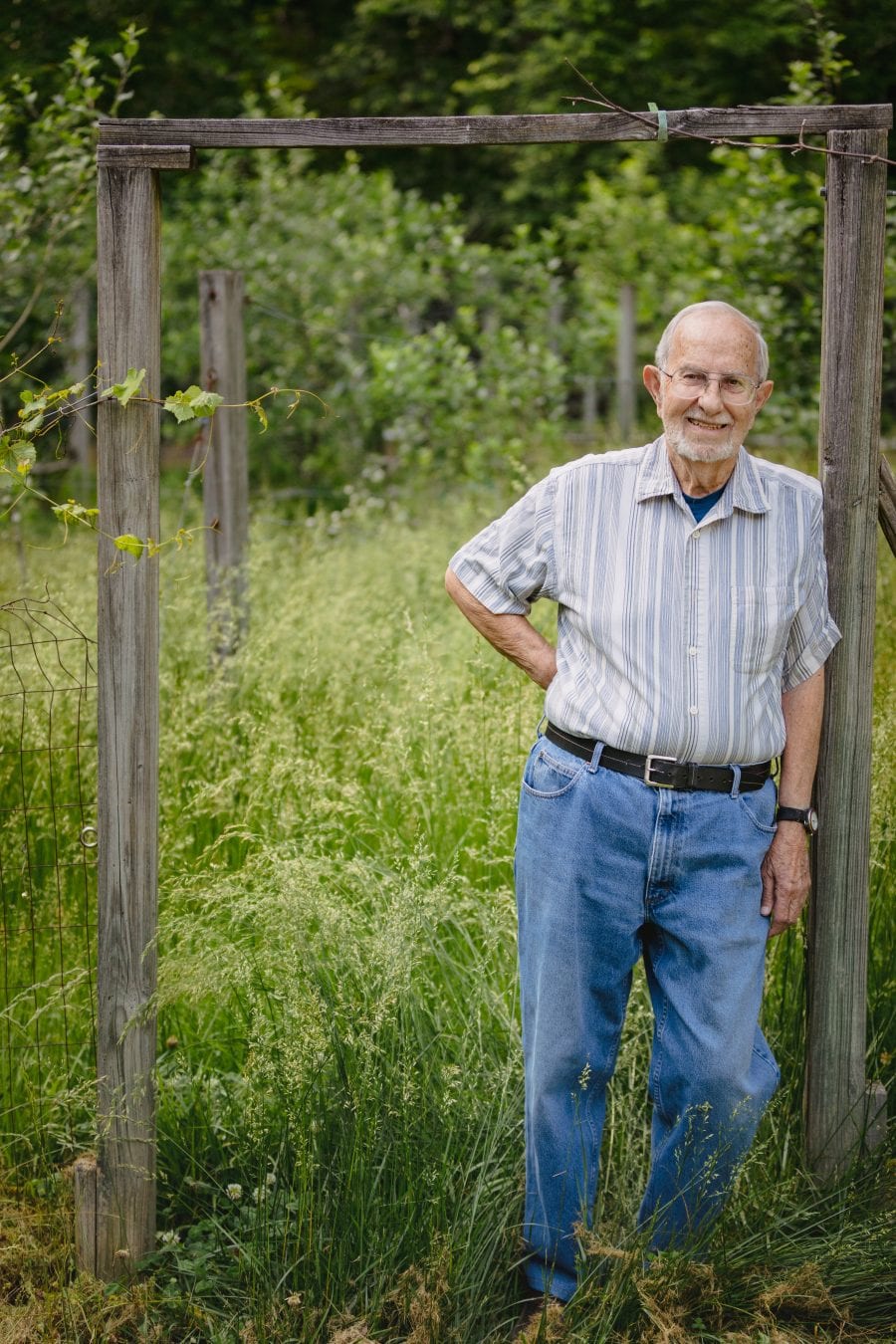
share
trending content
-
FINAL Vote for Your Favorite 2025 Southern Culinary Town
-
Get To Know Roanoke, Virginia
-
Shrimp and Grits: A History
by Erin Byers Murray -
New Myrtle Beach Restaurants Making Waves
-
FINAL VOTING for Your Favorite Southern Culinary Town
More From In the Field
-
One Night at Duck Camp
-
The Local Palate’s Tour of Tucker | Video
-
Curating Joy at COLA
-
Seeds of Change | Listen
-
Peak to Peak at Dalaya Thai







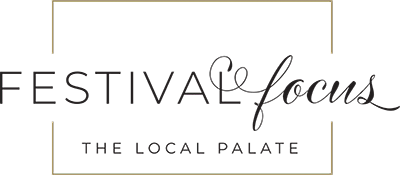

Comments 2
Can we have your permission to republish this article in our newsletter?
Hi Jeff,
Thanks for reaching out. You’re welcome to link to the article in your newsletter. Thank you for asking.
Hannah Lee, Digital Editor